The biological impacts of climate change are too often summarized by one image: a polar bear stranded on a shrinking iceberg. Though iconic, this trope glosses over the rich story of struggle and adaptation that underpins all climate change scenarios.
Because what matters is not so much the change itself, as the responses to that change. If every species was able to get along just as well in all conditions, then altering the weather wouldn’t matter in the slightest.
But that’s not how nature works. Biodiversity stems from specialisation, a great accumulation of plants and animals adapted to particular environmental conditions. With those conditions now in flux, species must react in order to survive – changing locations, behaviours and even their bodies in profound and surprising ways.
Six species that have adapted to climate change
American pikas
Rocky Mountains, USA
Imagine a greyish-brown, rabbit-like creature the size of a grapefruit and nearly as round – that is an American pika. These rotund little mammals inhabit high mountains from the Rockies westwards to the Pacific Ocean, and have always been considered at risk in a warming climate.
Like other alpine residents, pikas have nowhere else to go when temperatures rise and habitats shift uphill. But in an era defined by change and adaptation, new research suggests they might benefit from an unusual strategy – do nothing.
Pikas live almost exclusively in and around rocky slopes known as taluses, nesting in crevices between the boulders and venturing out only a few feet to gather grasses and wildflowers from nearby meadows. (They drag the snipped vegetation back home for later consumption, storing it in piles charmingly referred to - even in scientific papers - as haystacks.)
Due to the way cold air settles into the talus crevices, pika habitats can average 4 ̊C cooler than their immediate surroundings. That cold air then seeps downwards into vegetation at the base of the slope, often helping to maintain a patch of the very alpine meadow plants that pikas prefer.
That’s not to say pikas have nothing to worry about – they remain sensitive to extreme weather, loss of snowpack and other climate-related stressors. But the natural air conditioning of their talus homes gives them a rare place of refuge in a changing world.
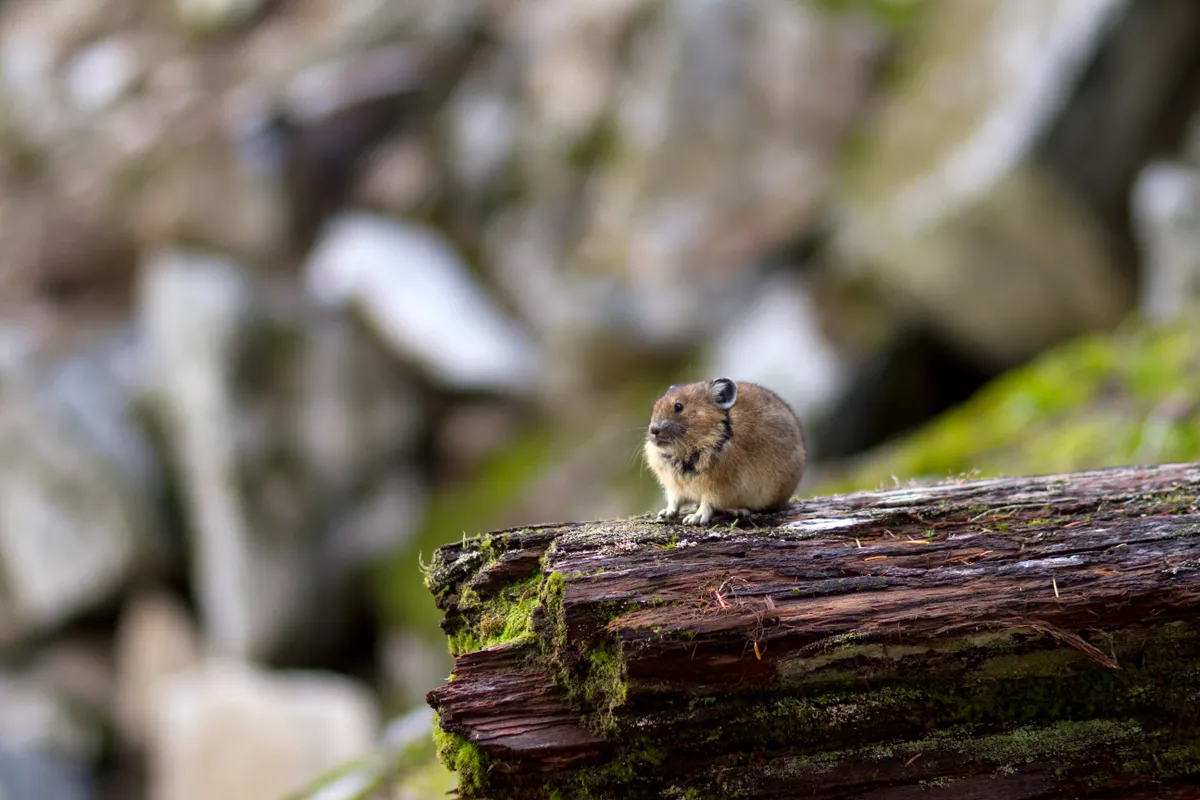
Caribbean lizards
Turks and Caicos Islands, Caribbean
Extreme weather events have been increasing due to climate change and when hurricanes Irma and Maria battered the Turks and Caicos Islands in 2017, buildings were flattened, trees were uprooted and a community was left reeling. Devastating though it was, this catastrophe also created an unusual scientific opportunity.
Researchers had just completed surveys of a local species of anole – a small, distant cousin of iguanas. They had intended to study the impacts of predation on lizards by non-native rats. Instead, they were now in the rare position to ask questions about hurricanes. Had any lizards survived the storms? If so, was the surviving population any different from the one they had just measured?
In what must have felt like a case of scientific déjà vu, the team surveyed the same lizards from six weeks earlier. It was immediately apparent that the surviving lizards – those that had managed to cling tightly to trees and shrubs for the duration of the two storms – had significantly larger toe pads and front legs, traits that enabled strong gripping power. But they also had short back legs, a mystery that could only be solved by observing lizard behaviour in high winds.
The researchers decided to stir up their own hurricane using a leaf blower and the experiment was simple (and harmless): place a lizard on a vertical stick, turn up the blower, and watch. As the ‘wind’ increased to hurricane strength, the lizards’ back legs slipped free and their bodies stretched out and flapped like flags. In that position, shorter back legs meant less surface area, and thus a reduction in drag that extended the length of time they could hold on. Lizards with that advantage – combined with the clinging strength of long front legs and big toe-pads – had a better chance of living through hurricanes. It was, in other words, survival of the fittest.
Later studies confirmed that these traits were heritable and that similar patterns existed throughout the Caribbean, wherever strong hurricanes were frequent. Climate was driving lizard evolution in ways that could be measured not over hundreds or thousands of years, but in the course of a single field season.
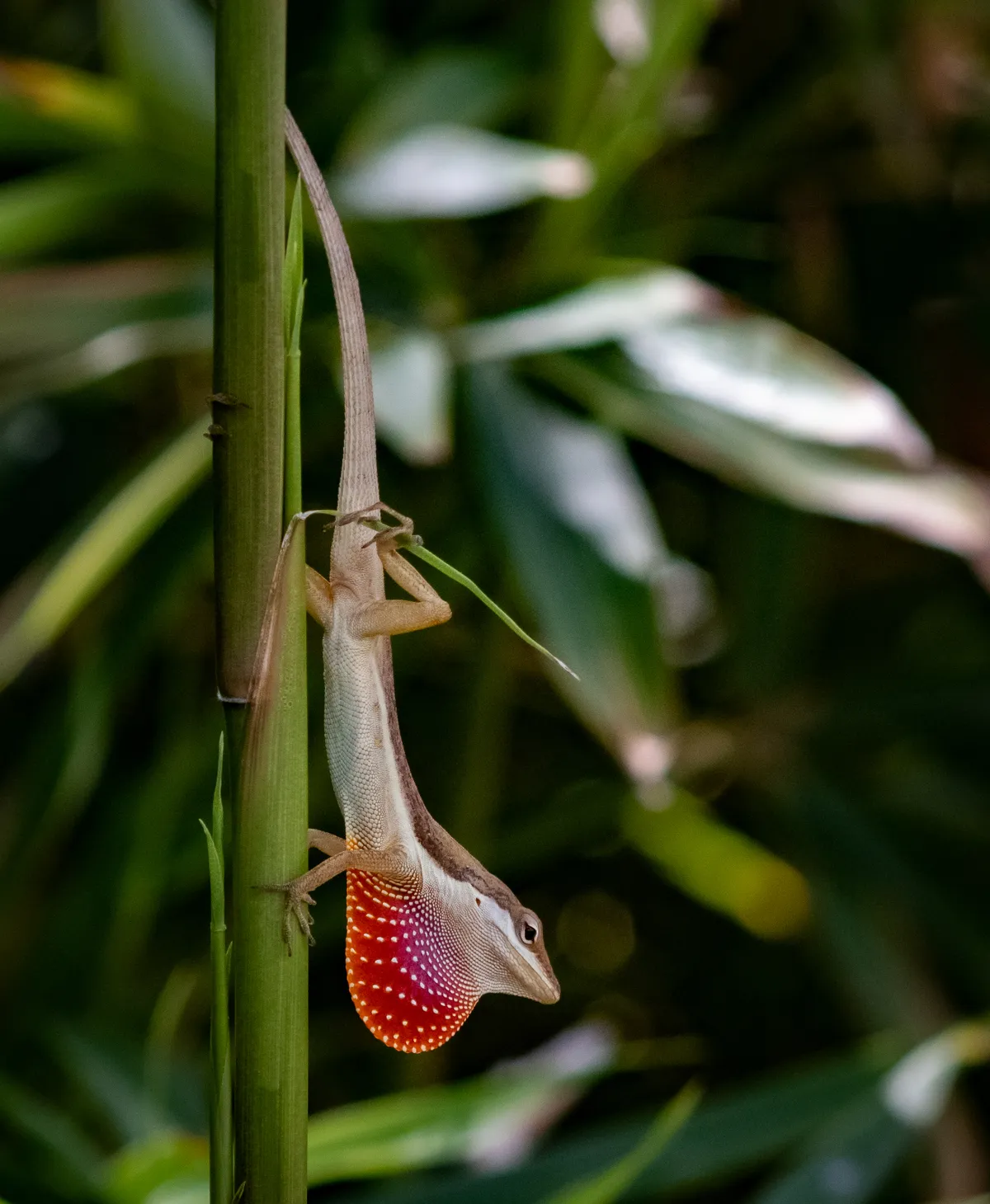
Kodiak brown bears
Kodiak Island, Alaska
On Alaska's Kodiak Island, it is axiomatic that bears like salmon. Kodiak’s brown bears can grow to 700kg, bulking up on the abundant salmon that spawn every summer in the islands’ many rivers and streams. Yet a recent study of that relationship found a surprising change. At the height of spawning season, just as salmon numbers began to peak, the bears suddenly stopped fishing and disappeared from the streams. Researchers followed them uphill and immediately saw what had drawn the bruins away from their fishing grounds – berry season.
There is certainly nothing unusual about bears eating berries. Autumn-ripening blueberries, crowberries and other tiny fruits are rich in carbohydrates and have always been an important source of late- season calories. But warming spring and summer temperatures have begun triggering earlier harvests, particularly for red elderberries, a food that bears apparently prefer above all else.
High in protein as well as carbohydrates, elderberries are a perfectly balanced bear food that add to fat reserves even faster than salmon. Biologists hadn’t realised how important they were until climate change forced the bears to choose between the berries and the fish – and the berries won out.
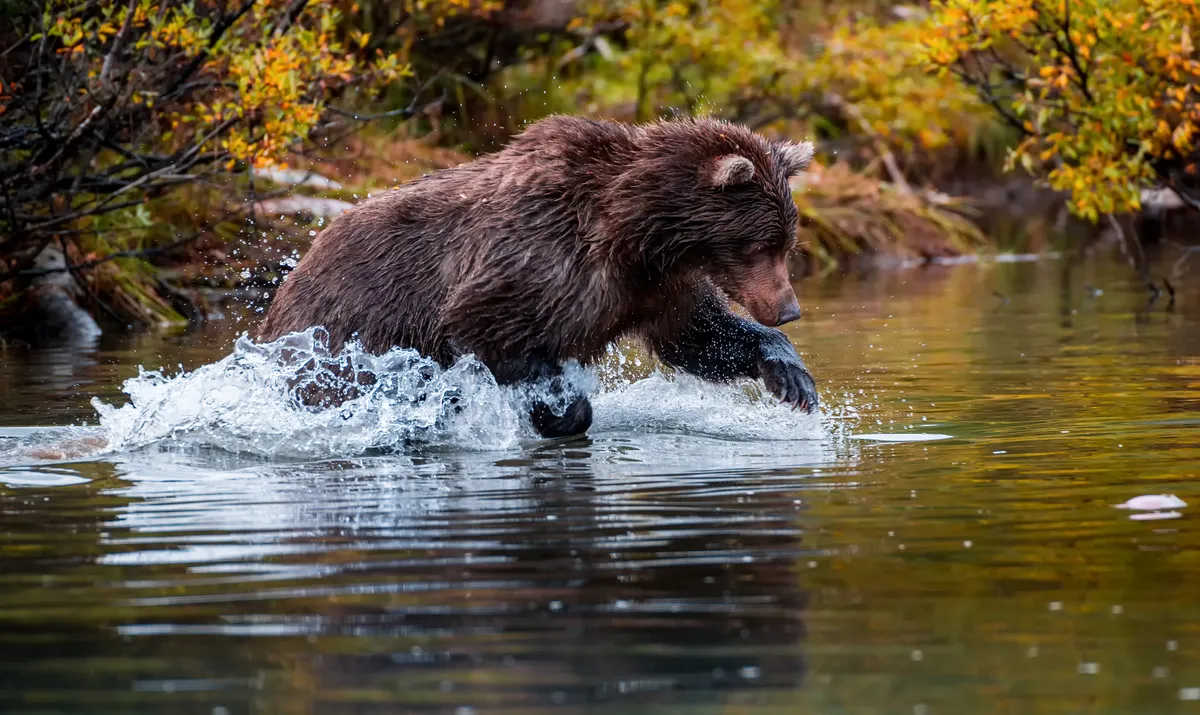
Read more
Jumbo squid
Gulf of California, Mexico
Mature humbolt or jumbo squid can reach nearly 2m in length, and have been harvested commercially in Mexico’s Gulf of California for decades. But these fast- swimming cephalopods virtually disappeared from traditional fishing grounds following a recent series of marine heatwaves. Or so everyone thought.
Ensuing surveys found the squid not only still present, but more abundant than ever. Instead of departing for cooler waters, they had responded with an extreme version of what biologists refer to as ‘plasticity’, an inherent flexibility built into their genetic code. For the squid, exposure to heat stress in the egg or larval stage had triggered a radically different life strategy. They matured and reproduced in half the time, ate different foods and lived only half as long.
As a result, their new adult bodies grew to only a fraction of their former size – too small to bite on the lures previously used to catch them. Fishermen had been dismissing the few they could hook as juveniles or another species altogether. For those species lucky enough to have it, plasticity allows a rapid response at a time of rapid change.
Little auks
Franz Josef Land, Russia
But when a team of researchers visited Franz Josef Land and attached radio tags to the birds, there was a surprise in store. Instead of winging their way for an hour or more to the edge of the ice, the auks were staying airborne for less than four minutes. They must have switched to another food source. But what? And where?
Surveys of a nearby fjord soon revealed the answer. The scientists found the birds flocking there by the thousands, diving and stuffing themselves on a totally unexpected feeding opportunity. Warmed by the same climate trends melting the sea ice, Franz Josef Land’s many glaciers were also shrinking, creating milky freshwater rivers that slammed into the cold ocean currents just offshore. For plankton, swimming so suddenly from one kind of water into another is like driving full speed into a wall. And for anything that feeds upon plankton, the resulting pile-up creates a bonanza – a vast underwater curtain of stunned prey, ripe for the picking.
Instead of documenting a grim decline, the researchers found themselves showing how at least one population of little auks was thriving in a warming Arctic. Granted, this new feeding strategy is not a permanent solution (island glaciers won’t last forever), but at current rates of warming, it gives the little auks at least a century to continue adapting to their rapidly changing home.
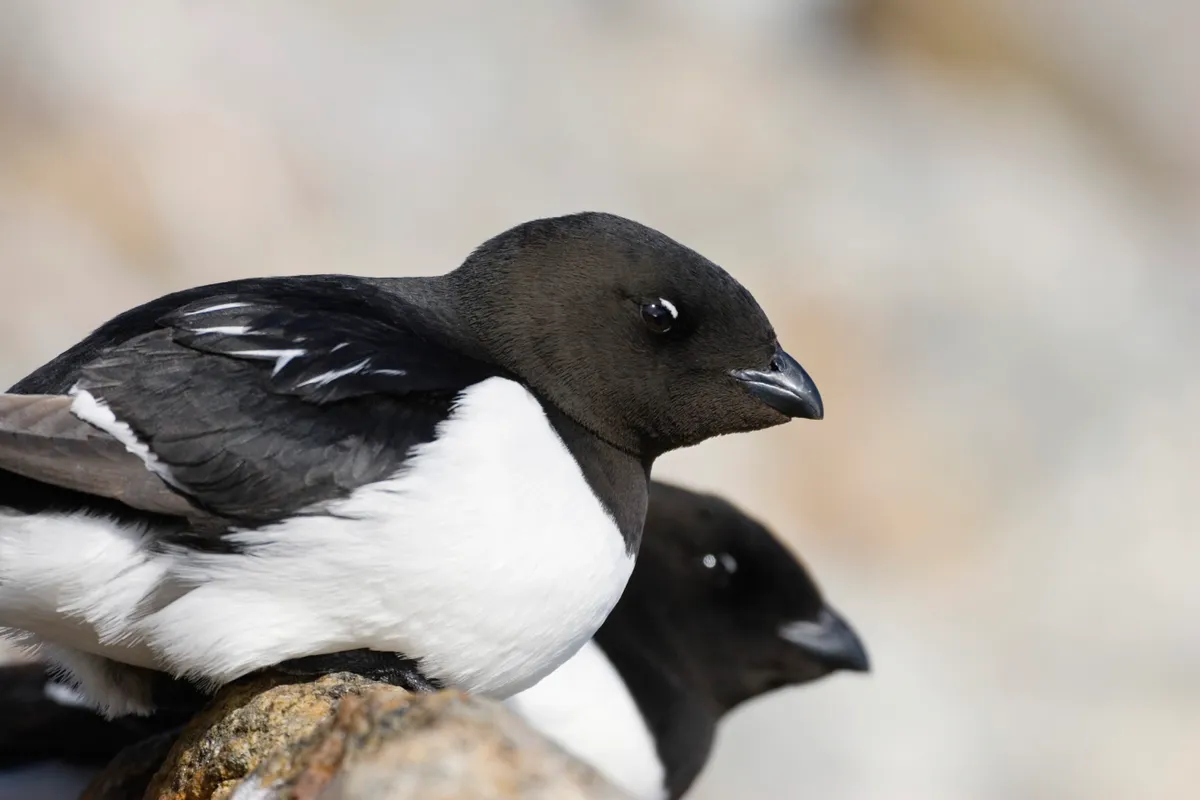
Butterflyfish
Western Pacific Ocean
Butterflyfish are famously feisty, staking out territories on coral reefs and skirmishing constantly to defend their borders. Yet when a group of biologists fanned out across the western Pacific to study this behaviour, they witnessed something entirely different. In the midst of their project, a climate-driven marine heatwave caused the corals to expel their algal partners.
Experts call this process ‘bleaching’ because it leaves once- colourful reefs ghostly pale. But it altered the butterflyfish too, transforming aggressors into pacifists overnight. For this reason, butterflyfish have been called the ‘canaries of the reef’ and their behaviour change acts as an early indicator that reef fish are in peril.
For butterflyfish, reef corals provide more than prime real-estate – they are also an essential source of food. Maintaining good territories amounts to keeping their larders well stocked. But when those corals bleach, their nutritional value plummets and the fish find themselves defending a pantry that simply isn’t worth fighting over.
The cost of combat becomes greater than the benefits of winning. Rather than exhaust themselves for nothing, the fish become docile to save energy. How this strategy affects mating and reproduction remains to be seen, but in the short term, it allows them to eke out a living in a calorie-starved environment, waiting for a time when the coral reefs may hopefully recover.
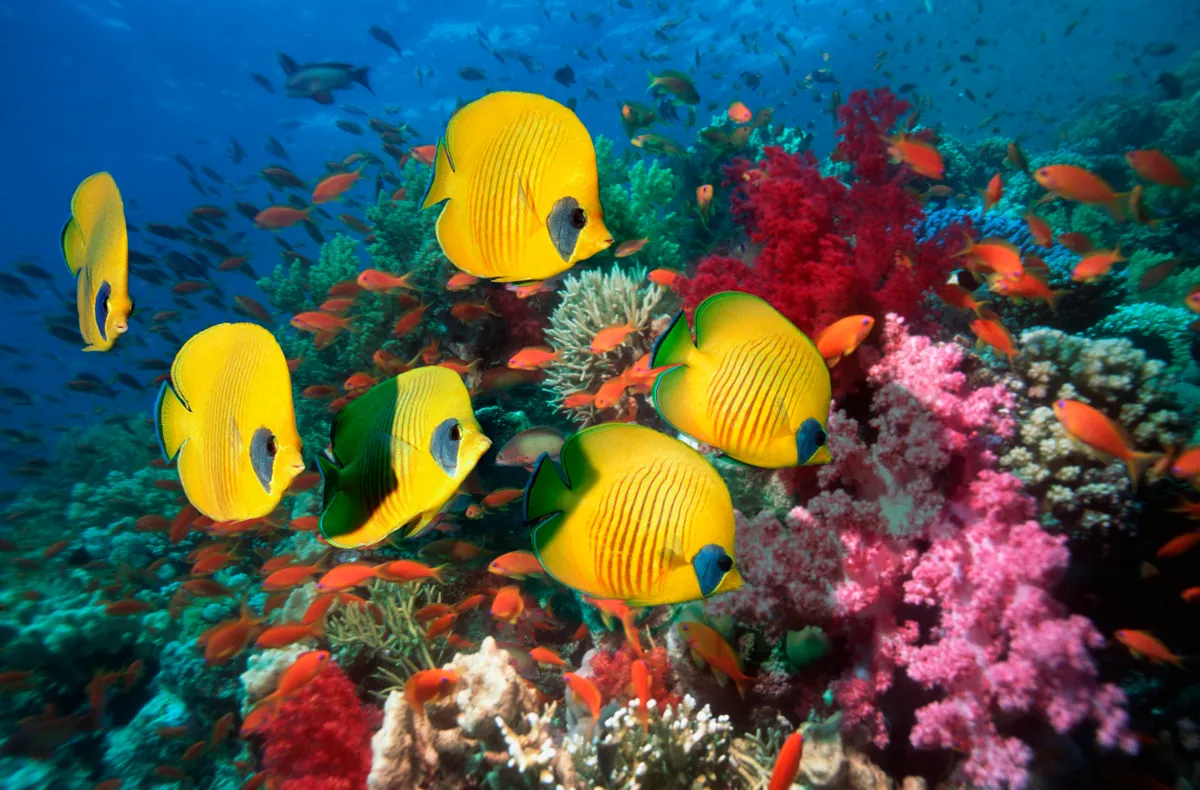
Thor Hanson is an author and biologist. His latest book is Hurricane Lizards and Plastic Squid: How the Natural World is Adapting to Climate Change (Icon Books, £20)
Main image: Little auk / Credit: Getty Images
